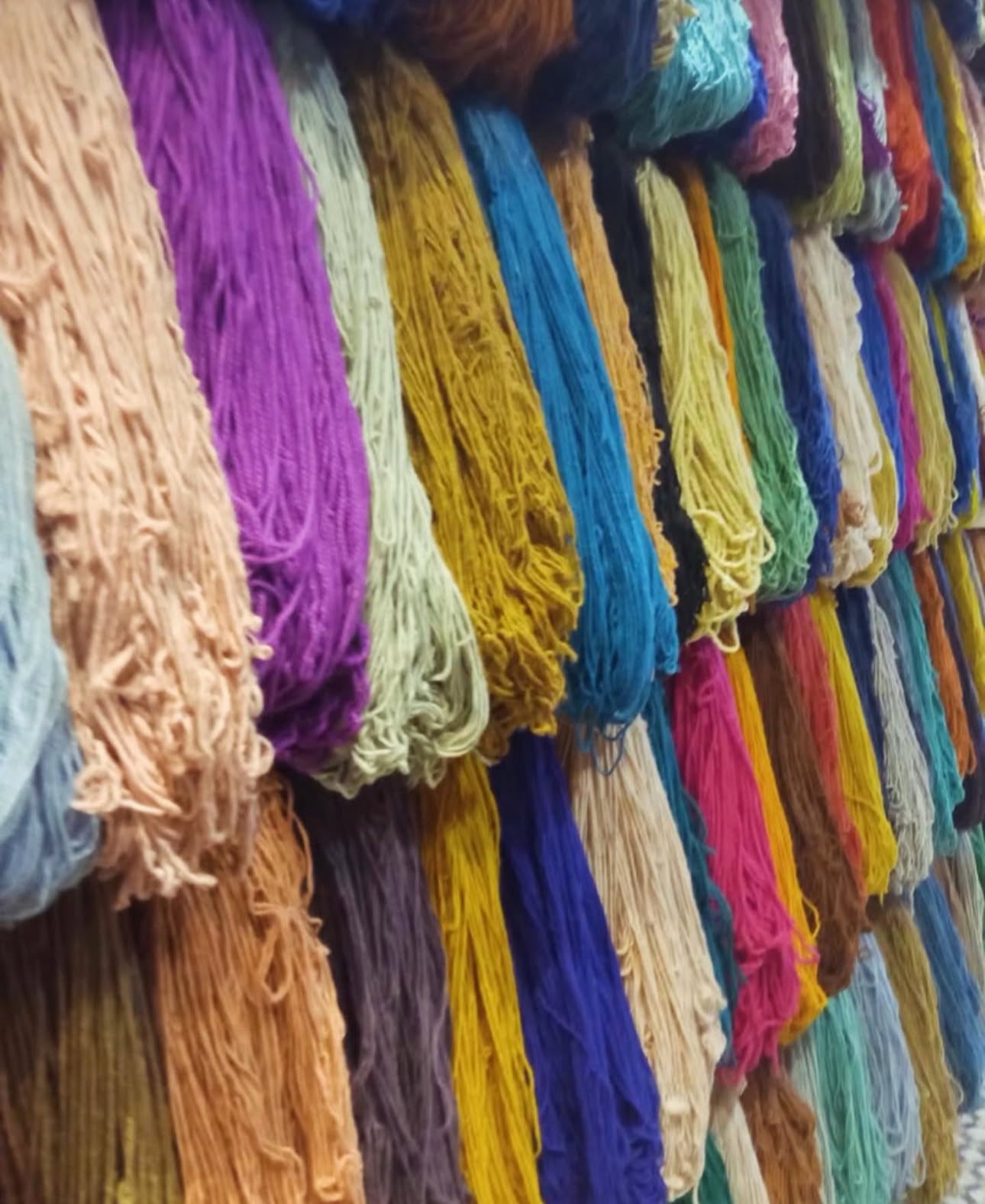how to make a carpet
Participate on our scale in the perpetuationof ancestral know-how
Discover our splendid colorful rug, a true work of artisanal art. Each rug is passionately handcrafted in our own carpet de ali baba taghazout cooperative, located in the heart of the majestic Atlas Mountains in Morocco. Made from 100% natural wool from local sheep, this rug embodies the beauty of nature. The colors, all natural, reflect the richness of Moroccan cultural heritage. Each thread is carefully woven to create a vibrant color palette that will brighten up your interior. Our colorful rug is much more than just a decorative object, it is an expression of traditional Moroccan craftsmanship and the creativity of our artisans. Treat yourself to a unique piece, rich in color and authenticity, with our handmade rug
shearing wool from sheep
Share information about your brand with your customers. Describe a product, make announcements, or welcome customers to your store
washing sheep wool
- Natural plant-based dyes have been used for centuries to create vibrant, environmentally friendly colours for sheep wool. If you are interested in knowing how nature colours1. Indigo – The Classic Blue Dye
Indigo is one of the most popular natural dyes. Extracted from the leaves of the indigo plant, this dye is known for producing rich, deep blue shades. It is often used in denim and other cotton fabrics.
Plant Source: Indigofera tinctoria (Indigo Plant)
Colour: Blue
2. Madder Root – For Red and Orange
Madder root is used to make a variety of red, pink and orange colours. It has been used for centuries and is one of the oldest known plant dyes.
Plant Source: Rubia tinctorum (Madder Plant)
Colour: Red, pink, orange
3. Turmeric – Bright Yellow Dye
Turmeric is widely used to produce a bright, vibrant yellow colour. It is easy to work with and is a long-lasting natural dye.
Botanical Source: Curcuma longa (Turmeric Root)
Color: Yellow
4. Hibiscus – Bold Purple Dye
Hibiscus flowers give off a gorgeous purple hue that can be used to dye natural fabrics like cotton and silk. It’s perfect for creating unique, bold shades.
Botanical Source: Hibiscus rosa-sinensis
Color: Purple
5. Walnut – For a Rich Brown
Walnut shells (the outer part of the walnut) are an excellent source for deep, rich browns. They’re a great choice for rustic or earthy color palettes.
Botanical Source: Walnut Tree (Juglans regia)
Color: Brown
6. Cochineal – Natural Red Dye
Although derived from insects, cochineal is often included in lists of natural dyes because it’s primarily used as a plant dye. It creates beautiful shades of red and pink.
Plant Source: Aloe Vera (used to grow cochineal)
Color: Red, Pink
7. Onion Skins – for yellow and brown shades
Onion skins can be used to create a range of colors, from light yellow to brown, depending on how the dye is processed.
Plant Source: Allium cepa (Onion)
Color: Yellow, Brown
How to Use Natural Dyes?
Prepare the sheep wool: Start by washing the sheep wool to remove any oils or dirt.
Prepare the dye: Boil the plant parts (roots, leaves, flowers, etc.) in water to extract the color.
Dye: Soak the sheep wool in the dye bath for several hours, depending on the intensity of the color we want
Set the dye: Use alum-like material supplied to help set the dye on the sheep wool and ensure the color lasts longer.
Natural dyeing is a sustainable and innovative way to add beautiful and unique colors to sheep wool. Whether you're interested in textiles for fashion or home decor, plant-based dyes provide a rich, environmentally friendly alternative to synthetic dyes.

With her delicate fingers she picks up the wool threads of sheep, spins the most wonderful pieces of handmade carpets, and departs far from this world. She is the "carpet paradise" woman who is and still is the companion of the loom and the threads.
